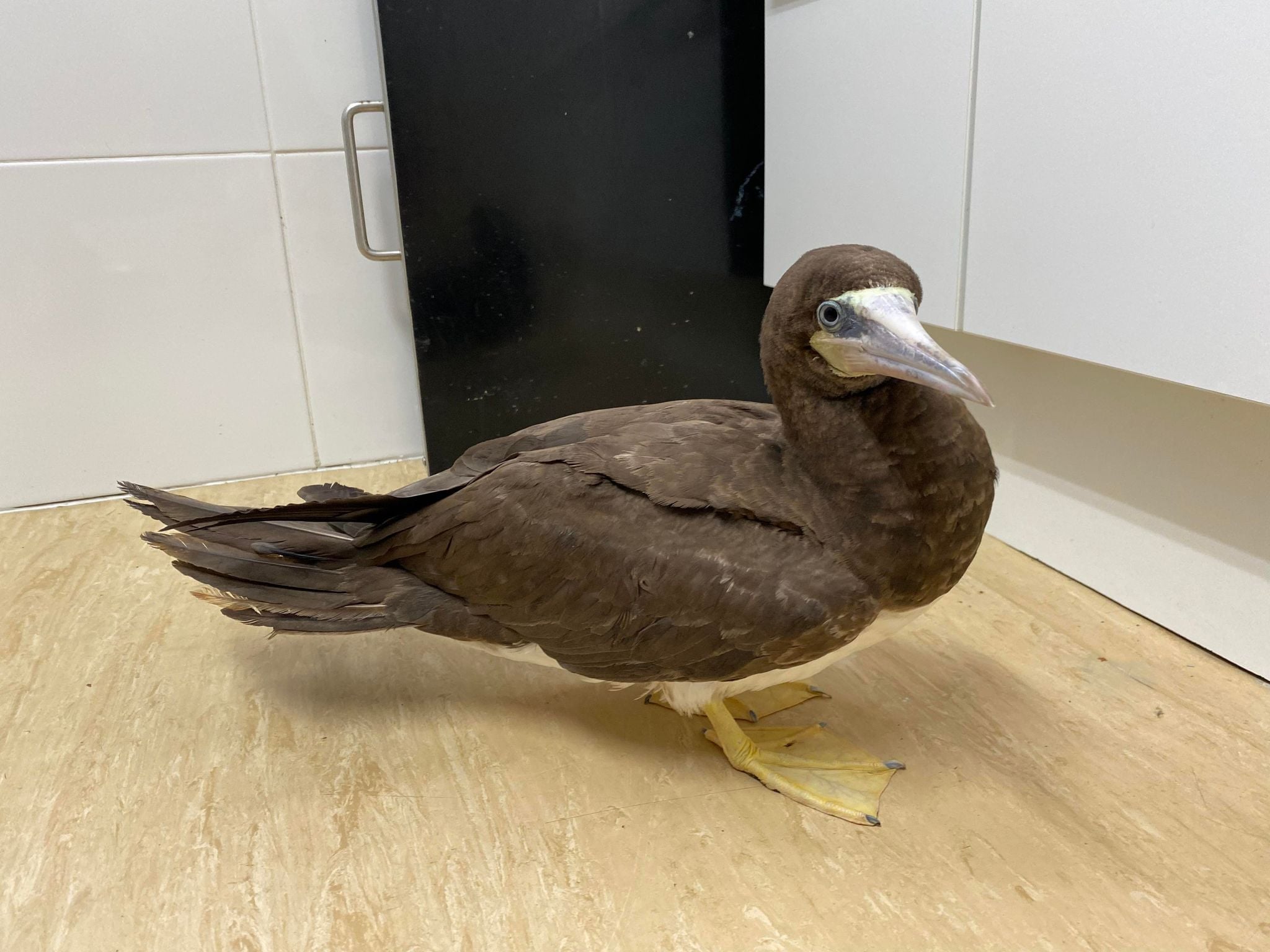
A rare seabird was found on Hove beach on Sunday and is now being cared for by volunteers.
Brighton and Hove Wildlife Advice and Rescue Service were called by a member of the public to the beach opposite Holland Road, where the brown booby – usually found in much warmer parts of the world – had already been caught and put in a box.
Volunteer rescuers Shaz Hawthorn and Lisa Barrow from then took it to the East Sussex Wildlife Rescue and Ambulance Service (WRAS) hospital near Lewes, where it was weighed and found to be very underweight, at just 760g compared to a normal body weight of 1 to 1.8kg.
Lead casualty manager Katie Nunn Nash said: “This is very concerning. The bird passed faeces of a solid enough state indicating that it had recently eaten but clearly not enough over time.”
This is the second booby which East Sussex WRAS has had in care. The last one was a red footed booby back in 2016. A brown booby was also spotted on the Cornish Coast in 2019.
Trevor Weeks MBE, founder and Operations Director of East Sussex WRAS said “Having one booby to deal with was a surprise – to get a second turn up here in Sussex is really unusual as these birds are found around from the Mediterranean and down onto the African coast as well as around the Gulf of Mexico over a pantropical range.”
“The brown booby is the most common and widespread of the booby species but very unusual here in the UK.
“We don’t know where the bird came from originally nor what route it would have taken but we are aware that these birds have landed on shipping and travelled outside of their natural home range before as well as being blown off course in storms.”
East Sussex WRAS veterinary surgeon Lourdes Cortes Saez MRCVS said: “We are being very guarded about the birds chances of survival due to the degree of weight loss.
” The bird has a good attitude and being a good patient so we are trying our best to build the bird up. Its very much one step at a time.”
Once the bird is healthy enough, it is likely to be transferred to another specialist rehabilitation centre before potentially being flown back to a more natural location for its release.







